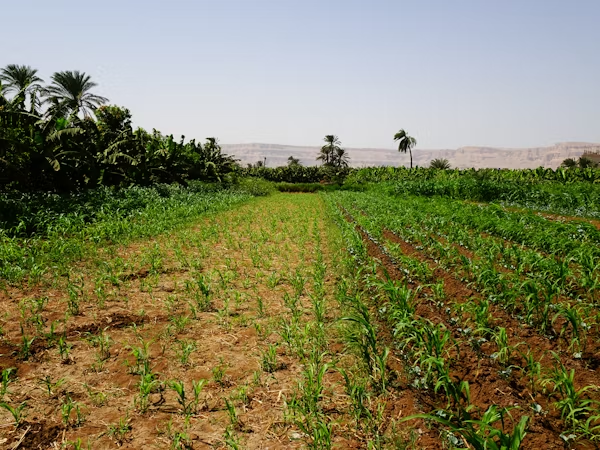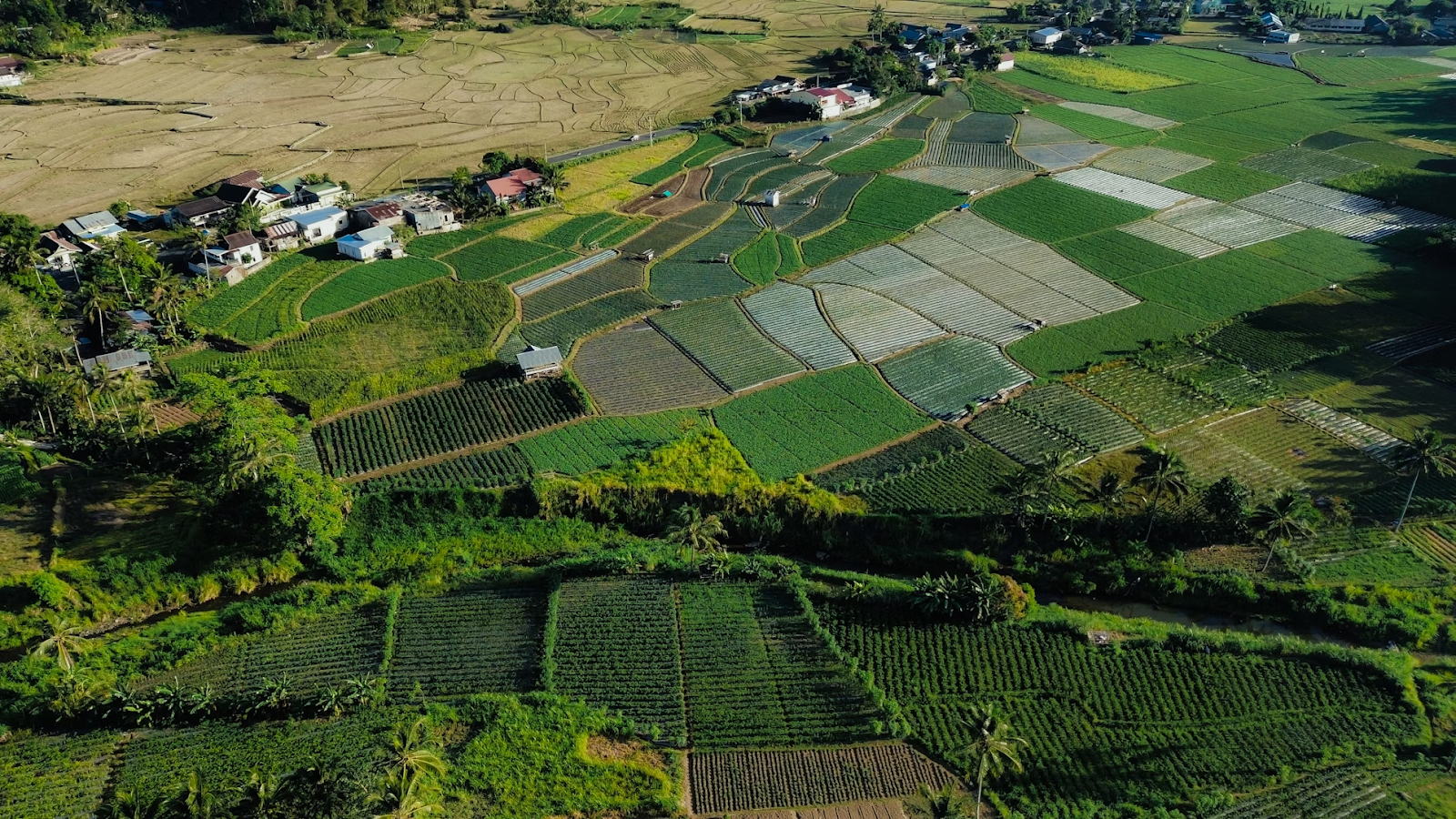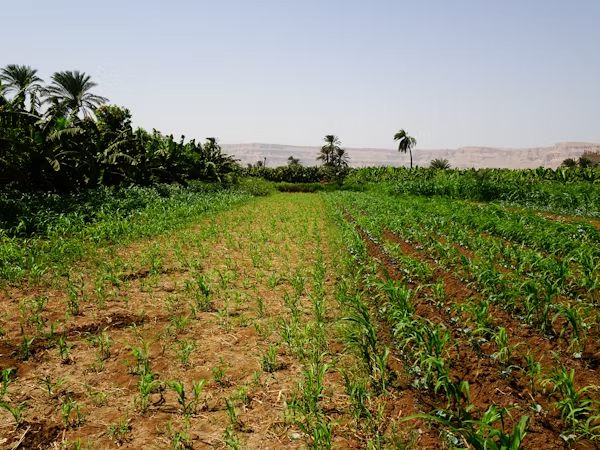
In an era of economic uncertainty and market volatility, investing in agricultural land has emerged as a reliable and strategic asset class. With the increasing global demand for food and sustainable resources, agricultural real estate continues to show strong potential for both capital appreciation and passive income.
This guide explores every facet of this investment avenue—from benefits and risks to strategies and FAQs—arming you with the insight needed to make informed decisions.
Understanding Agricultural Land as an Investment
Agricultural land refers to parcels of land designated for farming activities including crop production, livestock rearing, and other agribusiness operations. Unlike residential or commercial real estate, its value isn’t just derived from development potential but from productivity and location.
Why are investors turning their eyes to farmland? Because it presents an opportunity for both wealth preservation and sustainable yield generation.
Benefits of Investing in Agricultural Land

Investing in agricultural land comes with a wide range of financial and strategic advantages. Whether you're seeking stable returns, portfolio diversification, or long-term asset growth, farmland offers a unique blend of benefits rarely found in traditional investment classes.
1. Stability and Low Volatility
Agricultural land is one of the most stable investments out there. Its value doesn’t swing with the daily news cycle like stocks or tech-driven assets. That’s because food is a basic need, not a trend. People will always need to eat, and that steady demand supports long-term land value. Especially during inflation or economic downturns, farmland holds up remarkably well.
2. Passive Income Opportunities
Leasing your land is one of the simplest ways to earn passive income. Many investors rent their properties to local farmers, earning annual lease payments without lifting a finger. Others might opt for a crop-share model, where you split profits based on the harvest.
You can also get creative—think agri-tourism, farm stays, or even hosting solar energy projects. Farmland doesn’t just sit there; it works for you.
3. Asset Appreciation
Good farmland gets more valuable over time—period. As cities expand and usable land becomes more limited, demand for productive acreage increases. Add to that the rising global need for food, and you've got a strong case for long-term appreciation.
4. Tax Advantages
Tax perks are a nice bonus. In many regions, agricultural land is taxed at a lower rate, and if you’re actively involved in managing the property, you may be able to write off expenses like equipment or improvements.
And if you sell later, tools like the 1031 exchange (in the U.S.) let you roll those profits into another piece of land—deferring capital gains taxes and keeping more money working for you.
Risks to Consider Before Investing
Every investment comes with risks, and farmland is no exception. While investing in agricultural land can offer long-term stability and potential for appreciation, it's important to be aware of the challenges involved. Here are some key concerns to keep in mind:
1. Climate and Weather Dependency
Farmland productivity is directly tied to nature’s unpredictability. Factors such as droughts, floods, hailstorms, or unseasonal frosts can severely affect crop yields, reducing both short-term returns and long-term soil health. Climate change has further heightened the unpredictability of weather patterns, increasing the vulnerability of agricultural investments. Even with modern irrigation and farming techniques, certain climate events can drastically reduce the return on investment (ROI).
2. Regulatory Issues
Government policies and local regulations can have a substantial impact on farmland use and profitability. Zoning laws may limit certain agricultural or commercial activities on the land, while environmental regulations could restrict water usage, pesticide application, or livestock operations. In some regions, farmland owners may also face restrictions on development or land conversion. Staying informed about local and national policies is essential to avoid compliance issues that could delay or diminish your investment goals.
3. Illiquidity
Agricultural land is not a highly liquid asset. Unlike stocks, bonds, or exchange-traded funds (ETFs), it can take months—or even years—to sell farmland. This process often requires extensive marketing, negotiations, and sometimes land improvements to attract potential buyers. Market demand may also vary by location, crop suitability, and accessibility, which can affect the speed and price at which the land can be sold. As a result, investors should be prepared for a longer holding period and have a clear exit strategy in place.
Types of Agricultural Land Investments

Investing in agricultural land isn’t one-size-fits-all. Different types of farmland offer varying levels of risk, management requirements, and return potential. Understanding the distinctions between these categories can help investors make informed decisions based on their financial goals, time commitment, and risk tolerance.
1. Row Cropland
Row cropland is used primarily for growing annual crops such as corn, soybeans, wheat, and a variety of vegetables. These crops are typically planted in rows, harvested annually, and replanted the following season.
- Pros: This type of farmland is one of the most common and accessible entry points for new investors. It tends to be easier to manage, especially if leased to a local farmer under a cash rent or crop-share agreement.
- Cons: Returns can be lower compared to other types of farmland, and they’re heavily influenced by commodity prices and weather conditions.
- Ideal for: Investors seeking stable, moderate returns with relatively low upfront capital.
2. Permanent Cropland
Permanent cropland includes orchards, vineyards, and groves that produce perennial crops like apples, almonds, avocados, and grapes. Unlike row crops, these do not need to be replanted each year.
- Pros: While initial costs are higher, permanent crops typically generate higher returns once established. Long-term contracts with distributors or wineries can offer more predictable income.
- Cons: These investments require more intensive management and longer timelines before generating profits. They are also more vulnerable to climate and pest risks, given the long lifecycle of the crops.
- Ideal for: Experienced investors or those with a longer investment horizon looking for high-reward opportunities.
3. Livestock Land
This category involves land used for raising animals such as cattle, sheep, pigs, or poultry. The land may support grazing or include facilities for feedlots or barns.
- Pros: Livestock land can be a versatile investment, especially if leased to ranchers or livestock operators. It can also provide multiple revenue streams from meat, dairy, wool, or eggs.
- Cons: Requires more hands-on management if you plan to operate the business yourself. Disease control, animal welfare regulations, and fluctuating feed costs can also impact profitability.
- Ideal for: Investors with experience in animal husbandry or those looking for opportunities to lease to professional livestock operators.
How to Start Investing in Agricultural Land

Investing in agricultural land can be a rewarding venture, offering long-term growth, income potential, and portfolio diversification. However, success in this space requires thoughtful planning and due diligence. Here’s a step-by-step guide to help you start your agricultural land investment journey:
1. Choose a Location Strategically
Location is one of the most critical factors in agricultural success.
- Focus on areas known for rich, fertile soil, favorable climates, and abundant water sources, whether from rainfall or irrigation infrastructure.
- Consider proximity to transportation routes, distribution centers, and urban markets to minimize costs and maximize profit.
- Local regulations, land value trends, and long-term regional growth projections should also factor into your decision-making process.
2. Evaluate Soil Quality and Land History
Not all farmland is created equal. Conduct a thorough analysis to assess the land’s agricultural viability.
- Perform soil testing to evaluate nutrient levels, pH balance, organic matter content, and drainage capabilities.
- Investigate the land’s history to uncover any potential issues such as past contamination, overuse of pesticides, pest infestations, or erosion problems.
- Knowing this history can help you estimate any upfront remediation costs and long-term sustainability.
3. Understand the Local Market
Understanding the economic landscape is key to making profitable agricultural investments.
- Identify the most profitable crops or livestock suited to the area’s climate and soil.
- Analyze local and regional demand, pricing trends, and existing competition.
- Pay attention to seasonal cycles, supply chain logistics, and market access to gauge the land's potential for consistent income generation.
4. Work with Professionals
A team of experts can help you avoid costly mistakes and make smarter decisions.
- Agricultural consultants and agronomists can assess land productivity and recommend suitable crops or improvements.
- Rural real estate agents can help identify viable properties and navigate the legal aspects of the transaction.
- You may also want to engage attorneys, tax professionals, or environmental specialists, depending on the complexity of the deal.
5. Explore Financing Options
Farmland investments often require significant upfront capital, but various financing tools are available.
- Traditional agricultural lenders and banks offer loans with competitive rates tailored to farmland purchases.
- Explore government-backed loan programs, especially if you’re a first-time buyer or interested in sustainable farming.
- For passive investors, farmland REITs (Real Estate Investment Trusts) or crowdfunded agricultural platforms offer the opportunity to invest without directly owning or managing the land.
Agricultural REITs: An Alternative Way to Invest
If you're interested in farmland investing but not ready to commit to buying land outright, Agricultural Real Estate Investment Trusts (REITs) offer a smart alternative. These companies own or manage income-producing farmland and allow investors to buy shares, providing exposure to the agricultural sector without the complexities of direct ownership.
Key Benefits:
- Liquidity
Unlike physical farmland, which can be difficult and time-consuming to sell, shares in publicly traded REITs can be bought and sold on stock exchanges, offering much greater liquidity and flexibility. - Portfolio Diversification
Agricultural REITs allow investors to diversify into farmland—a traditionally stable, inflation-resistant asset class—with minimal effort. Many REITs hold land across various regions and crop types, spreading out risk. - Professional Management
These REITs are managed by experienced professionals who oversee land acquisition, leasing, and day-to-day operations. This hands-off approach is ideal for investors who want the benefits of farmland ownership without the need to manage it themselves.
Who It’s For:
Agricultural REITs are ideal for investors seeking passive income, long-term growth, and diversification—without the capital or time investment needed to manage farmland directly.
Global Opportunities in Agricultural Land Investment
Farmland investing isn't limited to your home country. Nations like the United States, Australia, Brazil, and Ukraine boast vast, fertile lands and well-established agricultural sectors, making them attractive destinations for investors.
- The U.S. offers legal transparency, robust infrastructure, and a strong agricultural export economy.
- Australia is known for large-scale farming operations and an investor-friendly environment.
- Brazil and Ukraine present high-yield opportunities due to fertile soil and lower land costs—but come with added political and regulatory risks.
Before investing abroad, it’s essential to understand local land ownership laws, taxation, and foreign investment restrictions. Partnering with a local advisor or legal expert can help you navigate these complexities effectively.
Sustainable Investing: The Future of Farmland

As consumer preferences shift and environmental concerns grow, sustainability is becoming central to farmland investment.
- There's increasing demand for organic and ethically sourced produce.
- Governments are offering incentives for eco-friendly farming practices such as carbon credits, grants, and tax benefits.
- Regenerative agriculture—which focuses on improving soil health, biodiversity, and carbon sequestration—can enhance land value over time while reducing environmental impact.
Investors who prioritize sustainability not only support long-term productivity but also tap into a growing market of conscious consumers and institutional buyers.
Technology's Role in Modern Farmland Management
Technological innovation is transforming how farmland is managed. Modern tools and platforms make it possible to operate more efficiently and increase profitability.
Precision agriculture involves the use of GPS technology, drones, and sensor-based systems to monitor crops, soil health, and water usage with great accuracy.
Data analytics platforms help farmers and land managers make informed decisions about crop rotation, fertilization, irrigation, and pest control. These tools reduce waste, improve yields, and support more consistent returns over time.
Exit Strategies and Long-Term Considerations
Before investing in agricultural land, define your goals and timeline. Ask yourself:
- Will I lease the land, actively farm it, or hold it for resale?
- What is my investment horizon—short-term flip, long-term hold, or generational wealth strategy?
- What legal protections and insurance options are available to safeguard my asset?
Some investors hold farmland for decades, passing it down to heirs, while others make strategic improvements—like irrigation systems or soil enhancements—to boost value and sell at a premium. In certain regions, land may also appreciate as urban expansion pushes outward, creating future development opportunities.
Is Farmland a Smart Investment for You?
Agricultural land can be a powerful addition to a diversified investment portfolio. It offers the potential for passive income, long-term appreciation, and tax benefits, all while serving as a natural hedge against inflation and market volatility.
That said, success in farmland investing isn’t automatic. It requires careful research, strategic planning, and, in many cases, ongoing oversight or professional management. From understanding soil quality to navigating market trends and legal considerations, each step plays a role in your returns.
Whether you're purchasing your first plot or expanding an existing real estate portfolio, agricultural land presents a unique opportunity to build sustainable, long-term wealth—both financially and environmentally.

Get a no-obligation offer in just a few minutes.





.webp)




.webp)
